


















































FISH & CHIPS

Double Glazing Repair UK
...For a clearer outlook
• Windows, doors & conservatories supplied & installed

• Foggy, misted, broken double glazed units
• Door & window locks
• Hinges & handles
• Upgrade to energy efficient glass
• Fire escape hinges
OFFER
*not
• Security advice & upgrades
• Draught & leaks
• Perished window & door rubber gaskets

• Patio rollers
• Cat flaps & letter plates
• Local family business
• Fully insured
Technician: Iain Frampton

Email: doubleglazingrepairuk@gmail.com
Mobile: 0790 965 4025 Telephone: 023 8073 1884



Web: www.doubleglazingrepairuk.com www.doubleglazinguk.org
Double Glazing Repair UK are proud members of


We are focused on personalisa�on and pu�ng people first to ensure you the individual decide how you would like to receive the care and support needed to live a be�er life.

We have had a mixture of weather recently, with cold bright sunny days, as well as some breezy wet days. What do you think our Spring and summer will bring us this year? Last summer was pretty good, so I am ever hopeful (as always) that we once again we will be able to bask in the sun and enjoy some alfresco dining. For now, we can marvel at the snowdrops (my all-time favourites), the bluebells, tulips and golden / white delightful daffodils. Gorgeous.
Do you have a spring clean to do? Do you want to change the décor? We did a spot of redecorating ourselves this week. Do you need a carpet cleaned, a tidy of the garden, a new blind for the kitchen, or new windows? Well, our wonderful advertisers here can help you! Take a look through your local magazine and see who you can call to ask for advice and get them to come to you or visit them at their place of work and then let them do the work for you. That is what they are here for.
If you have a summer fete coming up, a barn dance, a community picnic in the garden, a local sing-song or amateur play to perform, please let us know as we can promote these for you for free. Anything which is local and has the purpose of bringing people together we want to support. Let’s get to know our friends and neighbours and create some social time. It makes all that working so much easier and gives us things to look forward to.
Happy March to you all!
Debbie, Stephen & all of us here at Modern Magazines

DISCLAIMER: Whilst every care has been taken to ensure the data in this publication is accurate, the publisher cannot accept any liability to any party to loss or damaged caused by errors or omissions resulting from negligence, accident or any other cause. Romsey











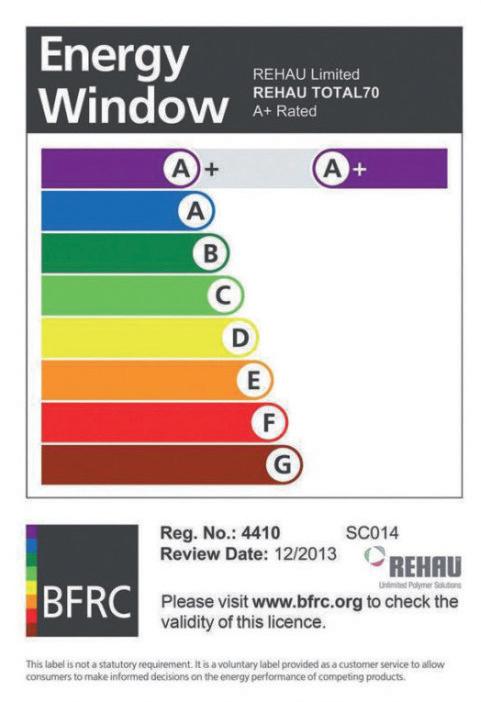


Test Valley Borough Council is encouraging residents to come together to celebrate the coronation of His Majesty King Charles III and the Queen Consort on Saturday 6 May.

And to help with this, the council has created a Coronation Grant Scheme, which will enable communities to apply for up to £500 towards local celebrations to mark the historic event.
Voluntary groups, not for profit organisations, clubs and societies, parish and town councils, and schools can all apply for a share of the pot. Residents looking to run street parties and other events in their neighbourhood can also apply, but are asked to contact their local community engagement officer first using the contact details at www.testvalley.gov.uk/
The closing date for applications is 12 noon on Friday 21 April and all activities must take place no later than Monday 8 May.
The council has also agreed to waive the fee for road closures for events linked to the coronation.
For more information, or to apply for a grant or road closure, visit www.testvalley.gov.uk/
For bigger events, organisers can also
apply for a Councillor Community Grant at www.testvalley.gov.uk/ councillorcommunitygrantscheme Leader of Test Valley Borough Council, Councillor Phil North, said: “This is one of just a handful of truly historic events many of us will get to experience in our lifetime, and it would be wonderful to see as many people as possible coming together to mark the coronation.”

“We hope that the Coronation Grant Scheme, Councillor Community Grant and waiving the road closure fee will help to facilitate this and I am really looking forward to seeing people celebrate across the borough.”
Buckingham Palace has announced a weekend of celebrations to mark the coronation, which will begin with the official service at Westminster Abbey on Saturday 6 May.
On Sunday 7 May, they are encouraging neighbours and communities to come together to hold a Coronation Big Lunch, while on Monday 8 May, people will be able to take part in the Big Help Out and volunteer for the day in their local area.


After much anticipation, the long-awaited new home for Romsey Rugby Club facilities finally opened on Friday 3 rd February. Pictured here is Nick Smith who has led this project for the Club over the last 10 years, together with Ian Paxton of Cocky Anchor, pulling the first pints. Whilst the Ganger Farm Pavilion opened last August, that turned out to be just the start of the process for the Club transitioning from the Sports Centre to Ganger Farm after 25 years.

Tristan Pattison, Director of the Club said that
“the challenge is now to make the most of the next two months whilst the Rugby Six Nations tournament is on to maximise our revenues, as well as optimising its use during the summer months”.
Since August, Nick Smith and his team have worked tirelessly alongside the Cocky Anchor and TVBC to largely rebuild the bar and cellar facilities to offer a ‘Clubhouse experience’ operated by the Cocky Anchor.

When asked, Smith said “he was delighted and very relieved to finally see members being able to enjoy the facilities and to welcome visiting Clubs in the traditional rugby manner. In due course, the Club will launch a social membership package and
be prepared to hire out the Clubroom to other users for meetings and social events, supported by excellent catering facilities”.
Smith went on to say “the Club have invested in TVs and a large drop-down screen to show major sporting events, but equally useful for business presentations. The longterm benefits are really to be gained by the growing number of children participating in Mini and Junior rugby, bringing together all the age groups every Sunday morning. The Club have also started a girl’s and women’s section, with the intention of running some sides next season. the extensive Ganger Farm site means that for the first time, all the club’s activities will be brought together in one place”.
When asked about the wider use of the site, Iain Messenger, Chairman of Romsey RFC said
“in contrast to other venues in the area, Ganger Farm offers plenty of accessible car parking on site. This move offers not only a great future for the Club but also to the local community, which may include us extending an Associate Membership to other local sports clubs. We see the combination of other sports using this facility as a really positive move, not only to ensure the Club’s financial viability, but also for the enjoyment of players, local residents and spectators alike”.














Via a galaxy far, far away, film star John Boyega is back within a few miles of where it all began - Peckham’s hottest property has been subtly talking up an Attack the Block sequel, something which reveals a few things about the 30-year-old social justice champion.


For many cinemagoers, John Boyega’s unveiling to mass popular culture was in the opening shot of the very first teaser trailer for 2015’s Star Wars: The Force Awakens, which attracted a recordbreaking 58 million YouTube views in its first week.
Past that, Boyega has strengthened his allegiance to the Star Wars brand in almost every way possible, as well as finding time to tread the boards, effectively making a
return to where his acting career started, describing his 2017 appearance in Woyzeck as “like riding a bike”.
“You’re on the stage and suddenly the lights are on and there’s an audience either clapping or throwing tomatoes at you,” he begins. “You have to adjust from being on a film set as there’s only one take!”
Boyega now looks to take that reconnection even further with the much talked-about return of Attack the Block, which came before Star Wars, albeit to a much more limited audience. The original 2011 sleeper hit became a cult film and launched both his and director Joe Cornish’s careers.
It’s therefore with some element of sentimentality, perhaps, that the multi-millionaire actor accepts the invitation to do it all again, at a time when his public profile suggests he should be doing something more status-driven.

“There is a romantic element to this, I don’t deny it,” he says. “You always want to reignite how the past feels, and it
gives you some perspective and appreciation of how far you have of come.
“No-one is doing this just for kicks. We are serious and we want to create something that isn’t just part of a sentimental journey. And it will be good. Better than good!”
Boyega’s return to the council estate also belies a growing reputation that he has become a stereotypical mouthpiece for a minority. “The things that matter to me – racism, equality, fairness – have mattered to me all my life,” he explains.
“I have never removed myself from who I am or what I stand for. What I do think is that the media are very good at painting you in one light, and that can be the go-to headline for everything you do.
“I don’t want to be that person,” he admits. “Sure, I want to champion equality, but that is not everything I stand by and stand for, and I think most people who know me, know that.”










































Test Valley Borough Council has unlocked £1M from the government’s UK Shared Prosperity Fund (UKSPF) to help local partner organisations to deliver six major projects in the area, including creating a new health hub in Andover and supporting community schemes in Romsey.

The government launched the UKSPF with the aim of reducing inequalities and supporting economic development and local communities through the provision of £2.6B of funding.
They had already allocated the six-figure sum to Test Valley, but the council had to unlock the funding by identifying projects that would help deal with local challenges, bring communities together and support economic growth.
The council submitted details of six proposed projects in August 2022 and received confirmation from the government last month that they would be releasing the money.
With the £1M now secured, a contribution of £240,000 will go towards extending the teaching facilities within the Andover College campus to help deliver T Level courses in construction skills, bricklaying and carpentry.
A sum of £280,000 will help council and health colleagues to expand the new Andover Health Hub in the Chantry Centre, which opened earlier this month. The hub will also be complemented by the creation of outreach worker posts, which will be part funded by a £110,000 contribution.

There will be a £100,000 fund created for community energy efficiency and decarbonisation projects across the borough, as well as £140,000 to help local rural land-based businesses to reduce their carbon footprint.
Thirty thousand pounds will go to the University of Southampton Science Park’s Catalyst Programme, to
provide innovationled businesses with commercial expertise and experience through mentoring and peer support from world-class business leaders.
And a new £100,000 fund will help deliver projects identified by Romsey Future to improve public spaces, deliver environmental and infrastructure improvements and increase footfall and visitors to the town.
Leader of Test Valley Borough Council, Councillor Phil North, said:
“This is such fantastic news for the borough and our partner organisations who will be leading on these projects. With a particular focus on improving the health of our local communities, driving down carbon emissions in the area and enhancing public spaces, we can expect toQ see some incredibly positive impacts on people’s lives.”
“And in the case of the Andover Health Hub, as well as providing a new facility in the short to medium term to help address poor health through early intervention and prevention, we’ll also be able to better understand the long-term accommodation requirements for those services as part of the town centre regeneration plans.”
“I am very much looking forward to following each of the projects as they progress over the coming years.”
The funding covers the three-year period from April 2022 to March 2025.
The aim of the UKSPF scheme is to support the UK government’s Levelling Up commitment through three investment priorities or themes, including communities and place, supporting local businesses and people and skills.












How our perception of diesel has changed over time, and why this final downward turn seems to finally be sounding the death knell for the petroleum product once labelled ‘wonderfuel’.
In the 1990s, life was beautiful for diesel. Engine technology improved with every passing year; and while fuel prices were low, supply was buoyant and, as a result, the popularity of this petrol derivative boomed.
The ‘wonderfuel’ revolution permeated the mass market of car production. Rather than an earthy, dirty oil that was once only associated with trucks, coaches and industrial machinery, diesel had funnelled itself through a centre space of transport where it propelled the ambitions of family cars, nippy run-arounds and souped up superpowered showpieces.
The boom has been down to the realisation that costeffective performance wasn’t just something that should be exclusive to the commercial vehicle operator, and cars such as the Audi 100 pioneered electronic control of the diesel engine for the first time. This advancement did huge things in terms of emissions, refinement and power; with the engines themselves benefitting from much greater power density thanks to tighter tolerance and improvements in fuel injection technology.
The marketing plan lasted a generation before the first chinks in the armoury were spotted. They arrived in
2015 and came bundled up as full-on warfare in light of the VW emissions scandal, although three years previously scientists spoke of the “silent killers” that particulate matter (PM) and NOx (nitrogen oxides and oxides) were proving to be.
Rapidly, diesel exhaust was declared a carcinogenic which put it in the same category as mustard gas and asbestos, causing lung cancer, and investment was backtracked. The Mexico City, Athens, Paris and Madrid mayors all pledged to outlaw diesel cars from city centres by 2025. Meanwhile London accelerated its commitment to low-emission

zones, as well as imposing strongly prohibitive toll charges designed to quell the diesel storm.

In 2023, the directive now is not to reconfigure, repackage or reduce, but to cease the production of diesel vehicles altogether. After all, fuel and maintenance costs are far lower with EVs and hybrids – the vehicles have fewer working parts needing to be fixed or replaced – and while the global energy crisis is rapidly pushing up the cost of utilities, its price elevation is no worse than that of fossil fuels.

The death knell has sounded, and with it comes frustration that the promises of diesel’s longevity – where motorists would complete a life cycle of car purchases – have turned out to be false.










Looking back 60 years to Dr Beeching’s infamous axing of a quarter of the UK’s rail network.
Many of us know the name Dr. Beeching. He has become the track tyrant of a past generation – a man who heartlessly cut a blade through communities in much the same way the rail lines he decommissioned had done through countryside and rural towns.


History will show that the publication of his first report, titled The Reshaping of British Railways, on March 27th 1963, some 60 years ago – and a follow-up two years later – sounded the death knell for a quarter of the UK’s railways, and disconnected overnight a number of towns, villages and hamlets from their neighbours.

In many ways Beeching became the punchbag for arguably one of UK transport’s most sensationally unpopular moves, yet was the label unfair? After all, the railways were in deficit to the tune of up to £100million a year – a wholly unsustainable mass of loss-making lines which were rapidly finding the marvellous motorways a formidable form of competition, as motorcars and freight trucks took footfall away from the trains. Hence, by the time Beeching – a physician and engineer with ICI – was appointed as British Railways chairman in 1961, the network was already in dire straits.
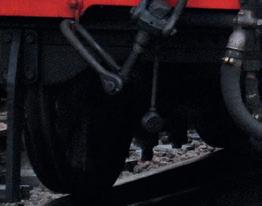
What’s more, the closure of routes had already been happening long before his weighty


report landed with the Ministry of Transport. Three thousand miles of lines had been axed since 1948, so while these new proposals were the most severe yet, they weren’t the first.
A good number of the 2,363 stations and 5,000 miles of track earmarked in the report for closure were in fact given a reprieve, such was the political, social and economic pressure the government found themselves under; and there were also positive recommendations in the report which, for the first time ever, documented a country-wide view of the railway system, and brought about firmer management of lines, operators, passenger welfare and general demand.
Wind forward to today and investment in our railways has never been greater. Network Rail has also worked hard to reinstate rural and local railways - at present there are over 60 Community Rail Partnerships in operation. Not only are these important to the communities they serve, but profitable too!
greater. railways
While it still has a long way to go, Britain’s railway network is once again the fastest growing in Europe and busier now than at any time in the past hundred years. The question has to be asked if this is because of, or despite, the infamous Beeching.




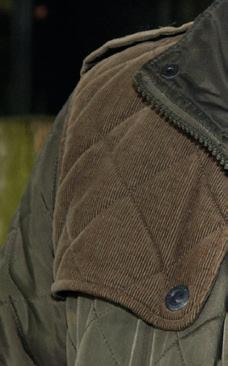


Designer, writer and television presenter, Kevin McCloud leapt into our consciousness with his vastly successful Grand Designs show on Channel 4. This month, the affable architectural business owner talks about his favourite room in the house.


I often get asked what I believe is the most important room in any building and my answer is always the same – it’s the toilet!

Now then, I know that’s not the most glamorous of answers, but think about it - you can make a house or a building with any number of rooms; you could create a home with no lightbulbs and perhaps not even a single window; yet without basic sanitation you could never remain there.
Without running water, you have almost no chance of survival without risking poor health, disease and, ultimately, death.
I’m seen the evidence of this, too. I’ve visited places in the world where running water and basic sanitation doesn’t exist; where the absence of those two things creates utter chaos and would eventually bring about the end of civilisation as we know it.
The point of all this is that in this world of ambition and desire, and in our pursuit of homely perfection, we can very quickly and very easily lose sight of the true basic necessities that enable us to evolve and survive as human beings.
It’s for that reason that someone moving into a shoebox studio flat in a grubby backstreet in a dead-end town can actually feel like they have achieved something monumentally big…
and they would be absolutely correct in that notion.
When you have somewhere that offers sanitisation, somewhere to eat, somewhere to sleep – you essentially have created the building blocks preservation of life. That’s tremendously exciting, very special and, rightly, the most rewarding feeling you can have.
In the coming year, we will all dream and plan and design… and do all those other things as far as the perceived improvement of our homes is concerned, and of course that’s the way we are as people – we are almost always forwardthinking and aspirational.
However, sometimes, it really is rewarding to take a step back – to look not at what you don’t have, but what you do have. It’s to say, ‘I am here, and I am covered’.
To have the basic necessities in life is actually 99% of survival and success… everything else on top is just decoration.






The UK’s cost of living crisis has seen the average household’s energy bill increase to around £3,500, as we experience the highest inflation rates in 40 years, so is it time to turn away from the oven and invest in one of these more energy-efficient cooking appliances?
With up to 10% of your energy bill spent on kitchen appliances, it follows that cooking with more energyefficient appliances could save you hundreds of pounds a year. Here we explore the most efficient alternatives, from the ubiquitous microwave to the humble slow cooker.

When it comes to hobs, much like your oven, gas is cheaper, but electric is more effective.
A lot of heat is lost into the room with gas, but the difference in cost makes the result negligible.


However, an induction hob is incredibly efficient because there is no energy lost around the pan (even electric ceramic plates waste heat), so if induction is an option, go for it.
Microwaves use up to 80% less energy than a conventional oven and cost as little as 8p a day to run. The downside of
course is what you gain in speed and convenience, you lose in versatility. However, it may be worth switching to your microwave when cooking vegetables, pasta and poached eggs, over boiling big pots of water on the hob.

It’s official, slow cookers are back in fashion, and with good reason. Not only have they been found to run on as little energy as a lightbulb, they are also great for feeding a family and can make tough cuts of meat such as beef shin and brisket tender and delicious.
They are also very hands off, meaning you can throw the ingredients in and leave it for hours!
A relatively new invention, air fryers are essentially small convection ovens, making them ideal for small jobs such as cooking frozen fish fingers for your child’s tea or heating up a small pie for lunch.
Also, as the name suggests, the air fryer makes superbly crispy chips with a lot less energy than the oven… and a lot less oil than a traditional fryer.

Pressure cookers can save a huge amount of energy compared to traditional cooking methods, simply because they get the job done so much quicker.
They also make cheap ingredients – low-quality cuts of meat, dried beans and pulses etc. – into meals fit for a king.
The one downside of the pressure cooker is that they take a bit of getting used to, especially as the pressure releasing process can be rather scary!

All types of Trees expertly
Felled, Topped & Pruned
Stump Grinding
Hedges Pruned & Trimmed
Lawns Laid
Fencing & Garden Work
Rubbish Clearance
Patios & Drives Jet washed
Driveways & Patios
Resurfaced or Replaced
FULLY INSURED
Waste Carrier Licence: CBDU374716
Evening Tel: 01794 522092


Daytime Mobile: 07946 513633 Email: treefellers@gmx.com





















How to stay safe online by avoiding scams, whilst keeping on top of what data you share and with whom.
While technology has made many areas of our everyday lives considerably easier –online banking, shopping and navigation for example – it’s also made us more vulnerable, and often we can underestimate the lengths that others will go to in attempting to obtain our data.
Online scams to look out for Online scams are becoming increasingly sophisticated and even those of us who are skilled at using the internet can be caught out. Scammers sometimes send bogus emails in the hope that people will enter their personal or financial details.


Scam emails can look genuine and appear to be from official places, like HMRC or a bank, but you can often tell it’s a scam. Look out for:
• Errors in the spelling or grammar, or an unusual style of writing
• Requests for personal information, such as your username, full passwords or bank details - genuine organisations will never ask this
• Threats that unless you act now your account will be closed
Occasionally these emails will redirect you to a fake website requesting you to provide personal or financial information. For example, a fake bank website may be set up asking you to update your account or security information. If you have any suspicions, check the URL or type in the bank’s official web address.
Another way of parting you from your well-earned money is via social media or dating apps. Once a scammer has gained your trust, they’ll start asking for money, often by telling you an emotional or hard luck story. If a relationship feels odd, be wary.
How can I protect my data?
• Keep your passwords strong and change them regularly. Use

different passwords for different accounts, avoiding using words or dates that are personal to you and can be found on social media, for example your dog’s name and birth date!
• Install security software on your computer. Anti-virus software will look for and remove viruses before they can infect your computer, while anti-spyware software prevents unwanted adverts from popping up, and stops programs tracking your activities or scanning your computer for private data, such as credit card numbers or bank details.
• Protect your wireless network. Read the instructions that come with your wireless router to find out how to set up a ‘key’ (a type of password) so that no one else can access the internet through your router.
• Keep your device updated. Your device will be better protected from viruses if you keep the operating system updated. You should receive notifications when new updates are available, but you can also update your system manually.








































I think you know how much we love the sea and outdoor living. Well Daichi was very generous last month and booked us a trip on the MSC (Mediterranean Shipping Company) cruise line, the Grandiosa! We have never been on a ship so big. Oh my, there are enough rooms for up to 6000 passengers as well as several thousand crew. It is magnificent with shops, a chocolate cafe, where they make their own chocolate, restaurants, spa, two theatres, bars and an ice-cream parlour, which of course we had to try… after all it is competition to our own ice-cream and waffle parlour in Weymouth, Wafflicious! I think I am getting a little over excited there… But really it is a splendid vessel. The crew are incredible. From all over the world and each has their own story.
We flew to Rome and got a taxi to Civitavecchia an hour away, where the port is. Staying overnight is a good idea as it takes away the stress of travelling, we find. Especially as this time we were in the plane for three and a half hours before we took off! Better to be safe than sorry though, I would say.
We had a leisurely morning, including coffee and a pain au chocolat at a local bijoux cafe. Just had to be done - we really were now on holiday. Once we were through customs and all the checks were complete, we very excitedly found our cabin and dropped our hand luggage off. The big cases were taken on board
by a crew member. We were on the thirteenth floor! Balcony and all. At 5pm off we set. You can hardly tell you are moving, but at night, being so high up there was an unusual side to side motion which I actually found quite soothing after I got used to it.

Palermo in Sicily! Our first stop. Having never been here before it was a delight to see. Stephen and I decided to take our own tours. The ship does provide great excursions, but we wanted to be independent. Google not only tells you where you can go but also how long it takes to walk there, so we (well actually Stephen) were able to work out exactly what we could do and how much time we had. We walked all the way around the centre of Palermo. The twelfth century cathedral is splendid. The horses and carts are delightful. The Massimo Theatre is glorious. I could really feel the splendour, opulence and dramatic setting of this magnificent Italian town. We so enjoyed our walk, gazing in awe, and of course the coffee sitting in one of the narrow streets complete with small, elaborate balconies and music you could almost hear from times gone by.
Malta was our next stop. After an evening of dining and on-board entertainment, we slowly and majestically arrived at our next destination. My dad was in Malta as part of his two-year conscription many years ago. There is a concept… compulsory enlistment, in his case, into the Royal Navy at the age of eighteen. He remembers it well. Today the
 An ice-cream sundae... Grandiosa style!
An ice-cream sundae... Grandiosa style!
area has many museums and artifacts in memory of the second world war. There are even hidden underground passages you can now visit, that were once used by important military leaders and politicians. Lots to do. We chose again to take our own path and in fact we walked over 20000 steps that day! A glorious walk around Valletta with fantastic views across the bays. The new square surrounded by street food vendors and a really attractive fountain were in contrast to the military background and gave you hope for the future.
A day’s sailing was next on the agenda! We chose to have a spa day and watch a movie while we glided our way through the deep waters of the Mediterranean. So relaxing.
Barcelona in Spain was our next destination. My parents had their honeymoon 59 years ago in this amazing city. As I was born early and 3 weeks less than nine months later, I do laugh and say, “I was made in Barcelona!” La Sagrada Familia is quite a feat. I thought there were building new on top of old and was dismayed, however that is not the case at all. It is still not complete and is the largest unfinished Catholic church in the world. Started in 1882. The new architecture is looking quite splendid and complements to older stones well. I always remembered that mum and dad went to a bull fight all those years ago, so a walk to Plaza de Toros Monumental de Barcelona was a must for me. It is quite an eerie place really. You can walk in the footsteps of both the matadors and the bulls, as well as enter the ring itself. Cultures change and it is interesting to see old traditions and look back on history, where we were and where we have come from.
The next time we got off the ship was at Genoa! Another unknown town to us and one we really

enjoyed walking around. We did not go in the huge aquarium there, but I hear it is highly recommended. Did you know (a bit controversial) that ‘our’ St George’s flag was apparently ‘stolen’ from here? We saw the flag a few times, flying high, and according to Google… “The symbol was adopted by England toward the end of the religious wars, in the 13th century with our ships flying the flag of Genoa as a deterrent to enemies.” Oops… Again, how interesting our history is.
Well, it was time to take our last cruise back to Rome. On disembarking we had a day to explore. Sitting, overlooking the Colosseum having an Italian lunch was awe inspiring. It ended our eight-day, seven night break on a high.


Sailing is not for everyone and certainly I would generally prefer a smaller ship, but we thoroughly enjoyed our self-generated European excursions, coffees in places we had never been before, nights singing to Abba, Italian Opera and the Addams Family in the all-inclusive entertainment each evening. Waited on hand and foot in the restaurants and having as much food as you want in the buffet. We love cruising. Let’s see if Daichi can top that this coming month!
By Debbie Corney A bull’s eye view inside the Monumental
How nostalgia revived the record industry.
There are several examples where society finds itself fighting back against the corporate monsters, but perhaps one of the strangest revivals in recent years has been the re-emergence of vinyl records.
At a time when the digital music revolution made listening to our favourite tunes cheaper, instantaneous and effortlessly mobile, we threw value and convenience out the window to reacquaint ourselves with bulky, immobile, dusty, scratch-happy records… but why?
Researchers and scientists believe our connection with music actually hooks into our desire to have physical objects around us, and digital music only ever satisfies one of those emotions.
Vinyl records – and the sleeves they come in – offer something to hold, to read, to savour; while collecting records and building our own ‘project’ through music is said to satisfy that human desire to anchor and look after.
From a low-point in sales terms in 2008, to the five million sold in 2021 offering a 30-year high year, vinyl records now make up 23% of all album sales, proving that our desire to


really immerse in a product and an audio experience is something that is only heading in one direction. Adele sold most vinyl records in
2021, though so in demand was her album, 30, that the 500,000 ordered by Sony created a global shortage in vinyl pressing plants, to the detriment of other upcoming releases. In 2022, the honour of most vinyl sales went to Isle of Wight exports Wet Leg.
Perhaps the most peculiar renaissance in terms of the way we listen to music has come about not through vinyl at all, but a rapid increase in the cassette tape market. In 2021 – the last year for which full figures are available –these totalled 190,000, up a fifth on the total achieved in 2020. What is even more perplexing about the trend is that it’s estimated that over
half of those purchasing cassettes do not even own a cassette player!

Back to vinyl, and it’s not just newly-released music that finds itself in the middle of a dramatic sales flourish, with the second-hand market also proving our desire for physical music continues in an upward pattern (thanks in no small part to sites such eBay and Discogs). Perhaps it’s time to have a look in the attic at some of your forgotten classics, particularly if your collection includes any of the artists below:
The 10 most collectable vinyl artists:
1 Elvis Presley
2 Bob Dylan
3 The Beatles
4 Nirvana
5 Jimi Hendrix
6 Miles Davis
7 Led Zeppelin
8 Beach Boys
9 Metallica
10 Depeche Mode
Attending a solicitor’s office can be daunting for many individuals. We see many clients who wish to bring a family member or friend into a meeting. This might be to provide moral support, take notes or provide additional insight into a matter. As solicitors we believe this is important as it can be intense going through personal, financial and particularly distressing matters. It is important that both during and after the appointment clients feel supported.
There are some instances where this is not always the best course of action and our solicitors must request the family member or friend to step out for a moment. Understandably this can cause upset but it is important to protect the client and any beneficiary who stands to benefit under the will. Solicitors have professional obligations to ensure that we are taking our client’s unfettered instructions. There are many instances of wills being overturned in expensive court proceedings as there is evidence of undue influence or a lack of understanding of the will contents. One example of this is a beneficiary overseeing the instructions and signing of a will. There could be a good explanation for this such as the person changing their will (testator) wanting to be open with the family member what the changes are, or needing them read over the document due to poor eyesight. This person could also be an executor of the estate and the testator may wish the solicitor to explain everything to ensure that all involved in the will understand what will happen after the testator dies. The problems come where the changes are in the beneficiary’s favour - or are to the detriment of someone not in the meeting
It is incredibly suspicious to an outsider (and certainly a judge!) looking at surface events and there is a risk of the new will being overturned.
It is also vital that the will wishes clearly come from the person making the will. Often family members will send in details notes of the instructions or follow up with emailed instructions. Be assured that we are not being intentionally difficult by refusing to take these outside sources without our client clearly understanding and confirming their instructions. It is simply to act otherwise puts the whole will at risk of being ruled invalid. The important thing to note is it is not a solicitor’s intention to cast aspersions on any individual. This is a requirement of all solicitors as above all it is important that any hint of a challenge can be avoided. If a family member is asked to step out of the office, rest assured it is for the best of reasons – to ensure that your Will wishes are properly recorded and carried out. This is intended for general guidance only. In all cases specific advice should be sought.
Bells are a specialist Wills, Probate and Conveyancing practice. The office opens five days a week Monday – Friday 9am – 5pm and home and hospital appointments can be arranged where appropriate. Our professional service is right on your doorstep. Join us again next time for another legal insight!
Tel: 01794 513328

E: bells@bells-romsey-solicitors.co.uk

Back in October, you may recall a piece I did on the history of Broadlands. My research went so deep that I barely touched upon everything I wanted to share, but there was one facet so fascinating to me that I had to revisit, and that was the famous names Lord Mountbatten entertained as guests. From the one and only Charlie Chaplin and Douglas Fairbanks Jr. of Golden Hollywood, to the leading women of Grace Kelly and Shirley Maclaine. I was starstruck at the cinematic icons I learnt to have resided by our town, which made me wonder - what connections does Romsey have to film and television?
It turns out Romsey has several credits for appearing on screen. The first that pops up on the Internet
Movie DataBase (IMDB) is The
(1987-2000). This regional crime drama, based on the books by author Ruth Rendell, was shot for the most part in Romsey, which stood in as the fictional Sussex market town of Kingsmarkham. The former magistrates court for example served as the police station, while a selection of streets and houses served as crime scenes and character homes. Furthermore, it was a Hampshirebased production company:
Television South (TVS), that created the series for ITV. The titular lead was played by George Baker - his credentials included I, Claudius, The Dam Busters, Miss Marple, as well as roles in James Bond and British War films.

My second find, which won’t be a surprise to older readers, was the original series of Worzel Gummidge (1979-81) - a children’s programme about a talking scarecrow based on the books by Barbara Euphan Todd. Braishfield, Stockbridge, and King’s Somborne all served as backdrops of Scatterbrook Farm and village, which fulfilled the required rural setting.
Doctor Who star Jon Pertwee played the rude and silly Worzel, alongside late actress’ Una Stubbs as Aunt Sally and Barbara Windsor as Saucy Nancy.
Although Romsey’s narrative roles end there, both maintain an air of nostalgia amongst a collective of Romsonians. The audio-visual makeup of the borough and surrounding area is only reflective of the county’s overall appeal
as a destination for film and TV productions. With historical attractions (Highclere Castle: Downton Abbey), mix of forests (Bourne Wood: Gladiator) and sweeping countryside (Stratfield Saye: War Horse), and idyllic towns and villages (Stockbridge: Wilde) - Hampshire has long been appreciated for its storytelling potential. Blockbusters like Avengers and Mission Impossible to factual programmes like Countryside and Antiques Roadshow have continually visited to explore or transform the diverse landscape into new worlds. And there’s no sign of it slowing down, quite the opposite. Winchester is a prime example of this, arguably boasting the most screen credits in Hampshire. Today’s stars and crews come from afar to shoot on the city’s historic cobblestone streets and buildings. The Cathedral in particular has been used repeatedly for period pieces such as Elizabeth: The Golden Age (2007) and Les Misérables (2012). A film map on Visit Romsey - in a blog called ‘Lights, Camera, Action... Romsey!’, goes into better detail of the scale of filmmaking that has gone on in recent years.

The benefits of having this creative activity take place on our doorstep is two-fold: it boosts our local economy and cultural image. You see, film and TV is one of the UK’s leading industries and money makers. According to the BFI, the film and television industry during 2021 ‘delivered an inward investment of £5.64 billion’. With an international
reputation built on talent, experience, and state of the art production facilities, Hollywood studios including Disney and Netflix are competitively investing to produce here. Watch a world famous show, namely Game of Thrones or the Star Wars franchise, and you see British actors, British crew, and British locations. Film Hampshire is an example of council services that have been specifically set up to encourage and support filmmakers looking where to create next - no doubt inspired by the long running success of Inspector Wexford.
But as a community, we do love to sit back and watch just as much as participate. The Community Cinema at the Town Hall exhibits newly released films monthly. And our town is immortalised in the collections of both Wessex Film & Sound Archive and British Pathé newsreels, which show Romsey in black and white film with jolly jingo narrations on top. You can also find archival footage from amateur filmmakers uploaded onto YouTube like ‘Colourful Romsey’ or Romsey The Movie, which are quite fun and insightful if you haven’t yet checked them out.
Coping with the scourge of insomnia.
The effect of insomnia can be tiredness, irritation, an inability to perform even simple tasks, plus feelings of confusion, depression and despondency.
Yet by managing sleep routine, it’s possible to temper the effects of insomnia.

Creating and sticking to a solid night-time routine is essential for managing insomnia.
This should begin with a set timeframe for going to bed, encompassing a gradual but planned wind-down as the evening progresses.
Waking up at approximately the same time each day is also important – sleeping in too late can mean the body isn’t tired enough to embrace sleep that night.


Reading a book or taking a bath will help your body and brain to relax during the process of calming down towards sleep. Peaceful activities prior to bedtime will positively enhance
your chance of falling asleep.
In contrast, it’s not wise to eat or drink anything substantial before retiring to bed. Smoking and consumption of alcohol or caffeine are a bad idea, as is the use of devices that emit blue light, such as televisions, smartphones or tablets. These will all prolong your time awake.
Ensure your bedroom is fully dark, quiet and calm when you go climb into bed. This will give you a head start in overcoming the battle against sleeplessness. Having fewer things to irritate or distract you is an important factor – even the ticking of a clock can keep brain function at levels that prevent it from relaxing.
In contrast, some insomniacs feel more assured with the presence of background
noise. Technology can play an important role in this, with everything from full-on podcasts to pre-recorded sounds such as crackling fires, thunderstorms and white noise, all of which are proven to help some drift off. It may well be a case of trial and error in discovering what works best for you.
While sleep is vital for the body to regenerate and recover from the day’s exertions, so too does it rely on having enough activity to feel it needs to drop into unconsciousness in order to rest and recover.
That means the more active you are during the day – physically and mentally – the more energy you will use and, in turn, the more you will need to recuperate.
Night-time convalescence is the perfect antidote to a tired and weary physique, so be active enough that the suggestion of sleep is one your brain cannot resist.













Wet weather can really dampen your mood, not to mention interfere with your fashion plans. Here are some waterproof ways to keep on trend when the dark clouds loom.

If you’ve ever worn bootcut jeans or flares, you’ll be familiar with how the loose bottoms drag in puddles and take half the pavement grime home with you. In other words, stick to slim fitting trousers like skinny jeans or leggings tucked into boots. Similarly, a long skirt is going to hold water, so go for something above the knee that you can wear with tights.

Choose high-tech over high fashion
High-end brands like such as Burberry have long been feted for their statement rain macs, but what works on the catwalk doesn’t necessarily work on the school run.
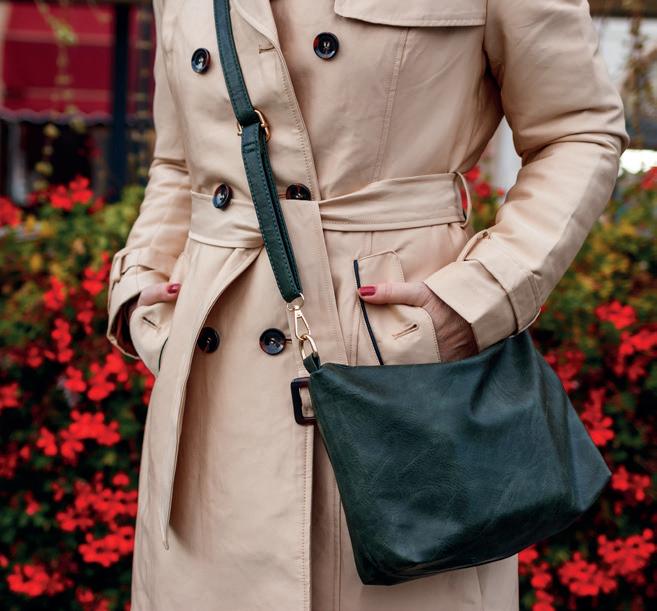

Fortunately, technology enhanced fabrics have been a big focus for the fashion industry the last decade or so, meaning you can find a

raincoat that not only offers almost total dryness, but is also lightweight and flattering too.

The only downside with such materials is that they are manmade and therefore less friendly to the environment. However, many high street brands are now choosing recycled polyester, so it is possible to be dry and a friend of the planet.
Buy some rain booties
I know what you’re thinking: the only time wellington boots are fashionable is when Kate Moss is donning them with a miniskirt at Glastonbury, but these aren’t just any wellington boots. These are the lightweight, Chelsea-boot-style ankle wellies that happen to currently be very much in fashion. That’s right, wellies have upped their style game, and a pair of these beauties tucked into skinny jeans or worn ‘a la Miss. Moss’ with bare legs, will give you that style edge even when the sky is falling in.
If you resent venturing out looking like you’re about to navigate a kayak down a river, then
focus on the small elements of your look that need to be waterproofed. Sturdy, leather boots will keep your feet dry enough in lieu of wellies; a cosy, knitted beanie will protect your hair for a short dash between your car and work; and a practical but stylish crossbody bag that is water-resistant can be big enough for all your essentials, over your expensive, leather handbag.
You may have given up on umbrellas after one gusty adventure too many, but it’s worth bearing in mind that there are brollies available now that are designed to be lightweight, sturdy and wind-resistant.








He’s a brilliant presenter, accomplished gardener, talented novelist, and allround horticultural inspiration. This month, Alan Titchmarsh discusses garden design and spontaneity.
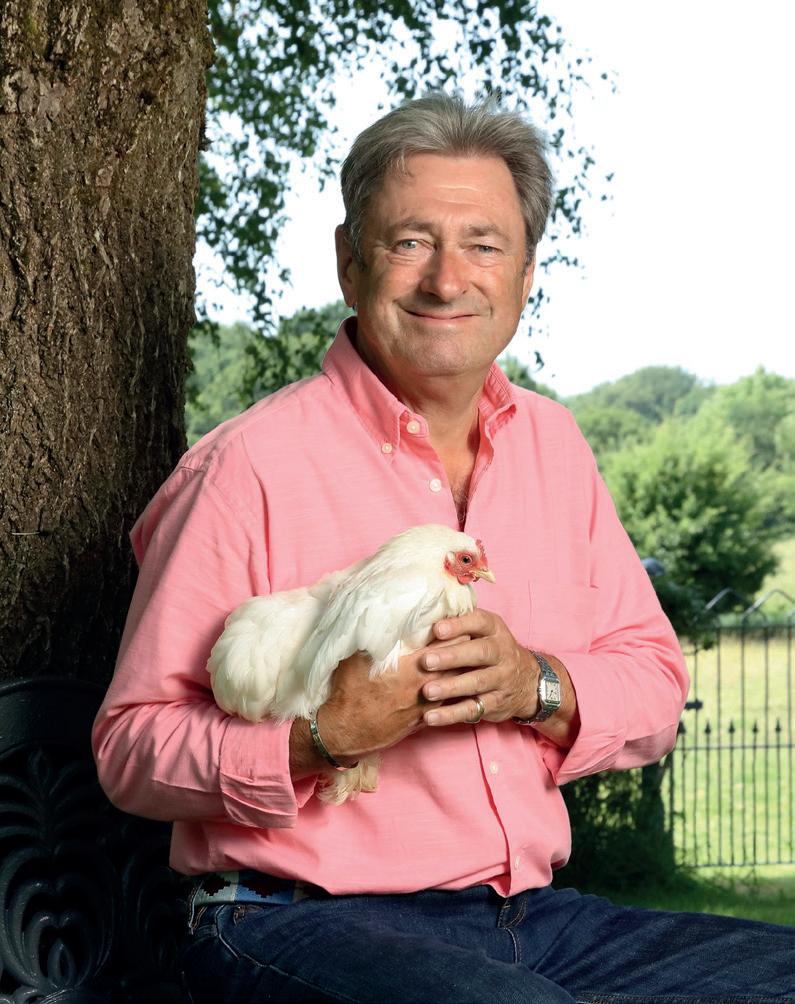
They say that a builder’s home is always unfinished, and much the same is true of any gardener in regards to his or her outside space.
We have been in our current home for almost 20 years, and I am still evolving, adding, altering – every day. And that’s what makes each passing year so special – the fact you never go back to a blank canvas, but each spring there are new opportunities, ideas and spaces that emerge here and there, that can be formed into whatever takes your fancy at that particular time.
While variety and versatility are definitely important in a garden, I do find it’s necessary to follow some familiar boundaries. One
of those, for me, is to ensure the inspiration for the style of my garden comes from the feel of my house, and I think this is true for any

outside space. The two must complement each other or you may find you end up with an awkward juxtaposition between the building and nature.
So my property is a classic, square Georgian farmhousethus I felt I had to do something that complemented that in the garden. I like straight lines anyway, which cross each other, and have softened this by planting throughout, creating a sort of billowing chaos in beds and borders. You essentially have one giving structure to the other.
Remember, gardening is very different to
architecture, because what you are dealing with isn’t just shape and form, it’s time as well –it’s a rapid adjustment and change between how something looks on day one and how it will look on day 100.
And while I know you’ll hear gardeners talking all the time about planning out an area, the types of plants you’ll have, and the tone and feel of a space; very often the reality is you are inspired by something off the cuff, and it is that instinctive appeal that’s exciting.
Whatever you’re going to do in your garden space, I would suggest it is gradual and over time. It really pays to observe and watch how nature embraces things – see what grows and what outgrows, and only when you are absolutely sure you want to adjust a certain area, only then proceed.

It’s about a steady progression rather than the wholesale demolition… such is life!






Welcome to the March Stargazing Page. Highlights this month include a close meeting of the brightest planets in the Solar System and Orion the Hunter still visible high in the southwest.
The ISS can be spotted early in the morning until the 11th. Viewing then switches to our evening skies from the 16th. To establish exact timings please refer to www.heavens-above.com or a similar webpage for up-to-date information, remembering to set the location to your observing area.
Venus and Jupiter appear extremely close to one another (known as a conjunction) in the early evening western sky. The closest they reach is on March 1st, after which the planets will slowly separate. This conjunction can easily be seen with the naked eye, but a pair of good, steady binoculars may allow you to spot some of the moons of Jupiter.
The start of longer daylight hours commences on March 20th at the Spring Equinox. This marks the first of two dates (the second being the Autumn Equinox) when daylight hours equal the number of night-time hours, wherever you are on Earth (equinox comes from the Latin meaning ‘equal night’). The equinoxes are the best time of year to determine the main compass point directions relative to your own home, as the Sun rises due east, sets due west, and is due south at midday. Try remembering these positions relative to a building or a tree.
Moon
March’s full moon occurs on the 7th.
The innermost planet is too close to the Sun to be seen this month.
Venus
Venus continues to dazzle in the southwest every evening and will be impossible to miss! At the start of March it sets around 8.30pm, but by month end it is sinking below the horizon as late as 11pm. It is close to the Moon on the 23rd and 24th (see figure).
Mars
The red planet can be seen above the constellation of Orion until the early hours of the morning, and although getting dimmer every day, is still a bright object.
As the Sun sets, Jupiter is visible low towards the southwest. By the end of the month it will be lost in the Sun’s glare. Saturn is too close to the Sun to be visible this month.
Diagonally across from Rigel, February’s Star of the Month, we find Betelgeuse, the tenth brightest star in the sky. It marks the right shoulder of Orion the Hunter, and its name stems from the Arabic for ‘hand of Orion’ (see figure). It is a red supergiant that is much cooler than our Sun; its surface temperature is 3,500°C. Betelgeuse is an enormous star at the end of its life, and if it were to replace our Sun at the centre of the Solar System, its surface would extend to at least the orbit of Mars. Put another way, if the Sun were the size of a grapefruit, then Betelgeuse would be the size of a large football stadium. Like Rigel, it will end its life in a giant explosion known as a supernova, leaving behind a neutron star or a black hole. On a night with no moon, see if you can notice that Betelgeuse is noticeably more orange than nearby stars.

With their serene beauty and intriguing wildlife, it’s no surprise that our chalk streams draw people to them. But when visitors leave, they may not be alone: diseases and invasive species could be hitching a ride to their next destination. For streams that are under pressure, or home to vulnerable species, this stealthy spread can spell disaster.
Take the white-clawed crayfish, for example. This amazing animal thrives in chalk streams, where it uses the mineralrich water to strengthen its shell. Yet it is now endangered, due largely to a water mould called ‘crayfish plague’. The mould’s carrier – the invasive signal crayfish – is mostly immune to its effects. For native crayfish, infection is usually fatal.
Unfortunately, crustaceans aren’t the only ones in trouble. Many chalk stream fish are susceptible to parasites like the fish louse, water moulds like Saprolegnia, and diseases like koi herpes virus or carp edema virus. Infection can lead to serious illness, and even death, in iconic species like the common carp, the brown trout, and the Atlantic salmon.
On the floral front, invasive non-native plants like monkeyflower, parrot’s feather, and floating pennywort can flourish from just a sliver of root or stem. These fastgrowing species can quickly dominate a chalk stream, depriving its wildlife of sunlight and oxygen. Once established, they are very difficult to permanently remove. Luckily, there are easy ways to enjoy our precious streams while doing your bit for biosecurity. Whether you’re a paddler, an angler, or a river keeper, you have a crucial role to play in their protection. Spores, eggs,
and plant fragments can survive for weeks in damp conditions, so we recommend the ‘Check, Clean, Dry’ method:
• CHECK your clothing and equipment after leaving the water. Remove any mud, aquatic animals, and plant material while on site.

• CLEAN your clothing and equipment as soon as you can, ideally with hot water. Make sure you get into all the nooks and crannies.
• DRY your clothing and equipment for as long as possible before using it again, especially if you will be visiting a different location.
Want to learn more about biosecurity? Join us at 7pm on 28th March for a free online talk; book your ticket at www.hiwwt.org.uk/ events. You can also get involved in tackling invasive species through the Watercress and Winterbournes scheme; visit www. hiwwt.org.uk/winterbournes. Our work is supported by the National Lottery Heritage Fund.
Discover a world of wildlife, with our free Open Chalk Streams events this April! Visit hidden places and see familiar ones in a different way. Learn more at www.hiwwt. org.uk/winterbournes/open
Quick Crossword Solution #025

Answers:
Across: 5. Antishock, 8. Feta, 9. Eventual, 10. Cadence, 11. Renew, 13. Stint, 15. Treason, 18. Oragious, 19. Sash, 20. Skimboard.
Down: 1. Inhale, 2. Silence, 3. Thief, 4. Scathe, 6. Recapture, 7. Gatehouse, 12. Erosion, 14. Nogaku, 16. Assort.
1) 11
2) 10
3) 5
4) 11 5) 7
6) 15 7) 13 8) 45-50 (11 on at a time) 9) 11 10) 6
Covering a comprehensive range of construction services, from the largest to the smallest of jobs considered, including but not limited to:-

• EXTENSIONS
• LOFT CONVERSIONS

• RENOVATION WORKS
• KITCHEN FITTING
• GARDEN GYMS / GARDEN OFFICES
• PATIOS
• BRICKWORK AND FENCING
• ELECTRICS AND PLUMBING With

Washing Machine, Dishwasher, Tumble Dryer, Fridge & Freezer, Cooler & Cooker Repair Specialists




Call Outs available Monday-Friday
Competitive Labour Rates
Tel: 01794 523599


www.taspacagna.co.uk
We can order, supply and fit goodsnew
and most other makes…


Famed for the gigantic, raspberrydusted meringues that adorn his shop windows, Yotam Ottolenghi is a patisserie expert, and these deliriously fudgy cookies are no exception.

(makes 24 cookies)
• 110g unsalted butter at room temperature, cubed
• 110g caster sugar
• 1 large egg, lightly beaten
• 125g plain flour
• ½ tsp baking powder
• 20g cocoa powder
• ½ tsp ground cinnamon
• ¼ tsp salt

• 100g 70% cocoa chocolate chips (or 100g dark cooking chocolate in 0.5cm pieces)
• 50g mashed banana (½ small banana)
• 170g pecan halves, finely chopped
• 100g icing sugar

1. In the bowl of an electric mixer with the paddle attachment in place, beat the butter and sugar on a mediumhigh speed until light and fluffy, then add the egg and beat to combine.
Sift the flour, baking powder, cocoa powder, cinnamon and salt into a bowl, then add to

the butter mix, beating on low speed for 15 seconds. Now beat in the chocolate and banana until combined, then transfer to the fridge for two hours to firm up.
2. Once firm, form the dough into 24 3cm balls, about 20g each. Put the pecans in a bowl, then drop in each ball, rolling it around to coat, which will press the nuts in as well, so they stick.

Put the cookies on a baking tray lined with greaseproof paper and refrigerate for at least an hour.
3. Heat the oven to 190°C/375°F/gas mark 5 and line two oven trays with baking paper. Put the icing sugar in a bowl and roll the cookies one by one in the sugar, pressing it in as you go, so it sticks. Arrange the cookies on the trays 2-3cm
apart, then flatten them to about 1cm thick.
4. Bake for 10 minutes, then remove: the cookies will be soft to the touch. Leave to cool for 10 minutes, then move to a rack. Serve warm or cool.
Maintain that fudgy factor by ensuring you don’t overbake these cookies.
You can also freeze them for up to three months once you have rolled them in to balls. Simply add one extra minute on to the baking time when you are ready to use them.

Across Clues:
1. Brandenburg Gate is here (6)
5. Sadden (6)
10. White fleshed nut (7)



11. To surrender (7)

12. Preoccupy (6)

14. Permanent artwork (6)
15. Take action (3)
16. Plant with large flowers (4)
19. Young insect (4)
20. Of crucial importance (7)
21. Small wingless insect (4)
23. Fail (4)
27. Time of existence (3)
29. Surviving (6)
30. View films (6)
33. Rail-like wading bird (7)
34. Indigenous lore; fundamental life force (7)
35. Sin of ___ meaning lack of care. (6)
36. Measure the volume (7)
Down Clues:
2. Deferral (7)
3. Woolly (6)
4. Short letter (4)
5. Saucer (4)
6. New layer (6)


7. Moving fluid in an enclosed line (7)
8. Institution (6)
9. Soak (6)
13. Selfish person (7)
17. Strike (3)
18. Cereal grain (3)
21. Lacking physical strength (6)
22. Relating to insects (7)
24. Tendency to do nothing (7)
25. Act (7)
26. Past; long and thin reptile (6)
28. Small seal (6)
31. Russian beauty working for the KGB (4)
32. Leave out







PORTSWOOD
Spitfire Lodge, Belmont Road SO17 2AX


Open Tuesday-Saturday, 10am-5pm
HYTHE
Hubert Lodge, South Street SO45 6GS
Open Tuesday-Saturday, 10am-5pm
